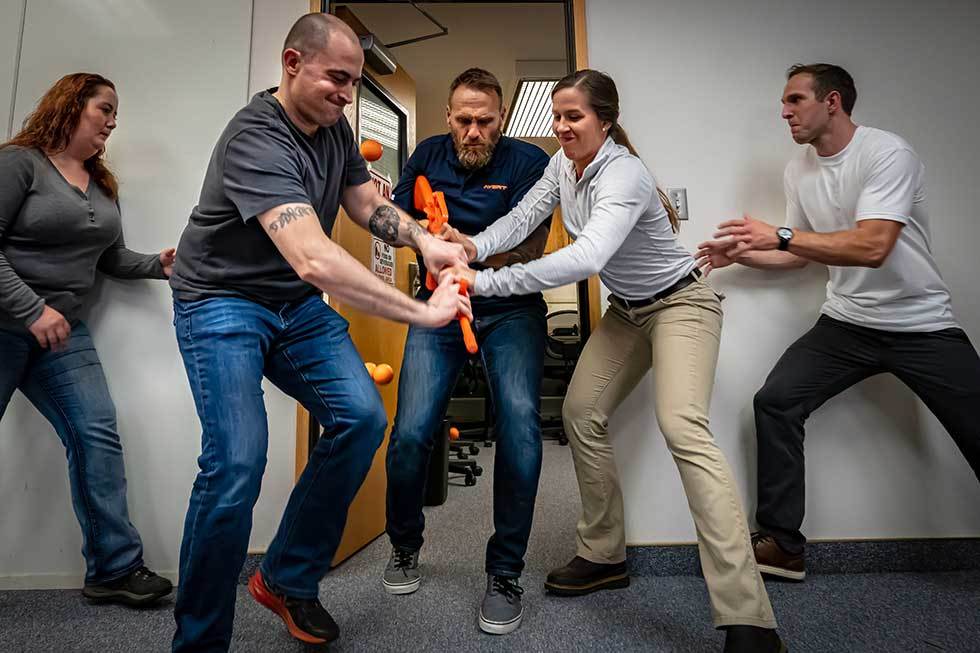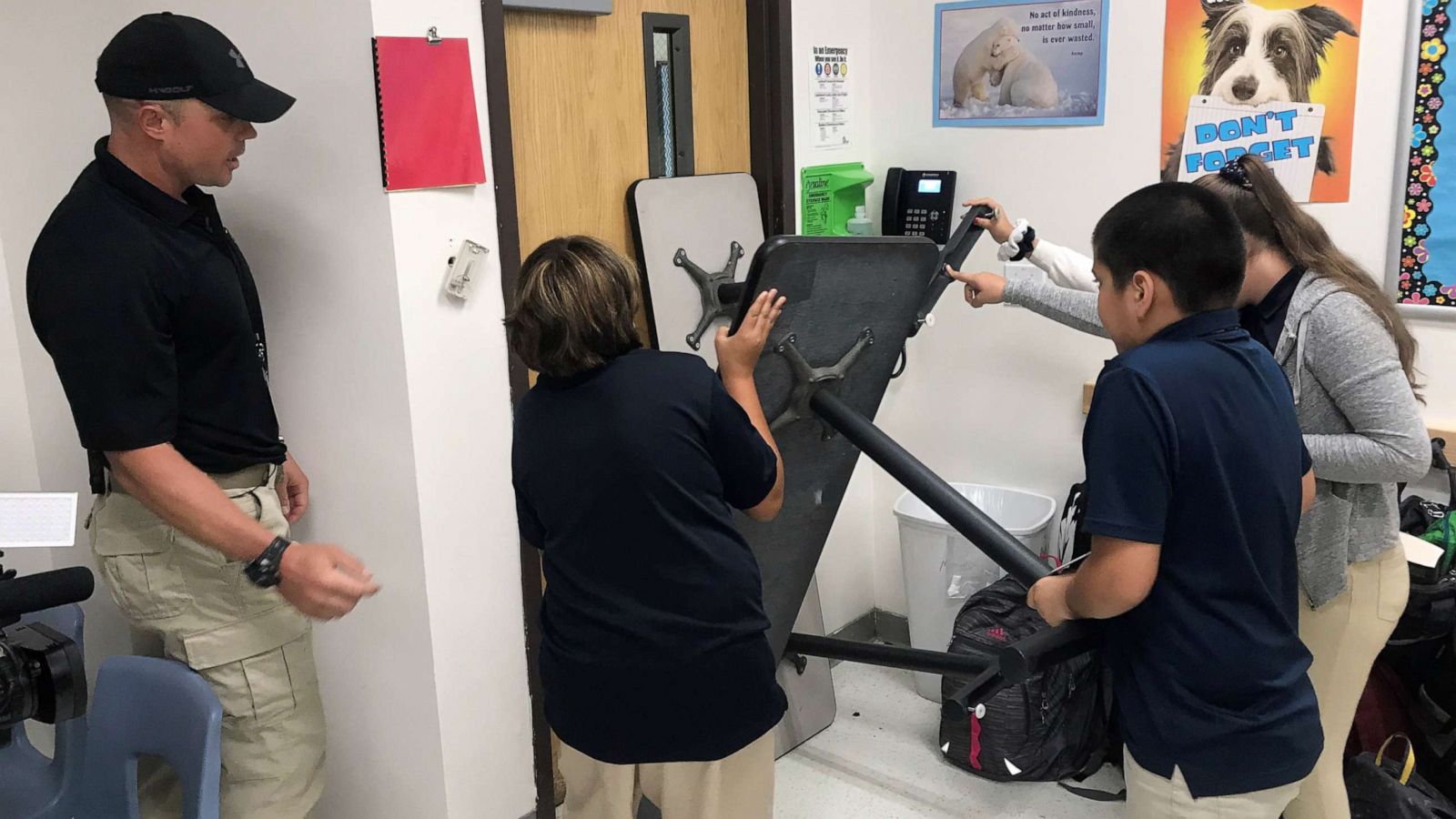The Benefits of Recurring Active Shooter Training for Area Defense
The Benefits of Recurring Active Shooter Training for Area Defense
Blog Article
Checking Out the Secret Parts and Goals of Efficient Active Shooter Training Programs
Energetic shooter training programs are crucial in furnishing individuals and companies with the required abilities to react effectively to prospective dangers. As we discover the details of these training programs, it becomes noticeable that comprehending their thorough nature is crucial to improving security measures and reaction abilities.
Value of Active Shooter Training
Energetic shooter training programs are vital for boosting readiness and response in the face of prospective risks. These programs intend to gear up people, companies, and areas with the expertise and skills required to properly react to active shooter scenarios. The enhancing frequency and extent of such incidents underscore the significance of proactive steps, as timely and informed actions can significantly mitigate damage.
Furthermore, active shooter training fosters a culture of safety and recognition within establishments, whether they be institutions, work environments, or public locations. Participants find out to identify early warning signs and recognize the relevance of interaction and team effort during emergency situations. This training not just emphasizes individual safety and security but also promotes a cumulative obligation to protect others.
In addition, these programs can aid minimize the anxiety and fear that usually go along with discussions concerning prospective threats. By giving structured guidance and sensible techniques, people get confidence in their capacity to respond suitably. Eventually, the relevance of energetic shooter training lies in its prospective to save lives, lower injuries, and cultivate a prepared and resistant community qualified of facing unpredicted difficulties.
Key Elements of Training Programs
Efficient active shooter training programs usually incorporate a number of vital components created to prepare individuals for real-world situations. The initial component is detailed education and learning on the nature of energetic shooter occurrences, including stats, study, and emotional factors that influence aggressors. This academic structure is essential for promoting recognition and understanding among participants.
Next, programs usually consist of training on individual precaution, stressing the "Run, Hide, Battle" method. Individuals learn how to examine their setting, make fast choices, and take appropriate actions during a dilemma. In addition, the incorporation of reliable communication skills is important, as participants should comprehend exactly how to report occurrences and share essential details with law enforcement.
One more necessary part is the participation of regulation enforcement or protection specialists, who supply understandings into tactical actions and the relevance of collaboration throughout a situation. Programs need to address the psychological after-effects of an energetic shooter scenario, providing methods for dealing and healing.
Finally, ongoing training and refresher course training courses are important to guarantee that knowledge remains current and participants feel certain in their capacities. With each other, these key components develop a well-shaped training program that furnishes individuals to react efficiently to an active shooter occasion.
Realistic Situation Simulations
Reasonable circumstance simulations are a critical element of active shooter training programs, providing individuals with the opportunity to engage in hands-on method that mirrors possible real-life situations. These simulations improve the training experience by creating an immersive setting where people can apply academic understanding in useful settings.
Via using role-playing, mock scenarios, and specialized training facilities, individuals experience the prompt challenges and stressors connected with an energetic shooter incident. This approach of training promotes fast decision-making, team effort, and the application of safety methods under pressure. It allows responders to establish important abilities such as situational recognition, threat evaluation, and effective emptying treatments.
Furthermore, practical simulations assist to recognize possible weak points in individuals' feedbacks, making it possible for instructors to give targeted responses and improve general readiness. The incorporation of varying circumstances, including various areas and assaulter accounts, further improves the training experience, making certain that individuals are well-appointed to take care of a variety of prospective circumstances.
Ultimately, these simulations serve not just to advise however likewise to develop confidence among individuals, promoting a sense of readiness that is essential for reliable emergency situation feedback in the face of an active shooter risk.
Interaction Approaches in Training
Clear communication is crucial in energetic shooter training programs, as it directly influences the performance of action efforts throughout a dilemma. active shooter training. Training participants have to comprehend the protocols and treatments that will lead their activities if confronted with an energetic shooter circumstance. Establishing clear lines of interaction guarantees navigate to this site that all people included can relay info quickly and precisely

Moreover, training programs need to highlight the importance of energetic listening. Participants should be educated to translate and respond to info effectively, decreasing misunderstandings that can bring about hazardous situations. Routine responses sessions post-training can additionally improve interaction approaches, making certain that all individuals feel equipped to share their experiences and recommendations for renovation. Ultimately, effective communication techniques are vital for preparing individuals to respond emphatically and cohesively when faced with an active shooter event.

Emotional Preparedness Strategies
Psychological readiness methods view publisher site are significantly identified as vital components of energetic shooter training programs - active shooter training. These techniques intend to equip people with the mental durability necessary to react effectively in high-stress scenarios. By fostering a way of thinking in harmony with potential dangers, individuals can much better handle anxiety, anxiousness, and confusion during critical incidents
Key mental preparedness techniques include scenario-based training and stress shot workouts. Scenario-based training immerses participants in sensible simulations that mimic the turmoil of an energetic shooter event, allowing them to exercise decision-making under stress. This exposure helps construct experience with emergency situation protocols, improving natural responses.
Tension shot entails gradual exposure to stress-inducing circumstances, enabling people to create coping mechanisms. This can include breathing exercises, visualization methods, and cognitive restructuring to reframe unfavorable ideas. By incorporating these techniques, training programs can cultivate a sense of confidence and great site control, which is essential in dilemma scenarios.
Additionally, post-incident psychological assistance is important to address the psychological results of an energetic shooter occasion. Including psychological health resources right into training programs not only prepares people for immediate actions yet also advertises long-term mental well-being, eventually adding to a much safer and extra resilient atmosphere.
Conclusion
To conclude, efficient energetic shooter training programs are essential for enhancing readiness and action capabilities in the face of possible hazards. By integrating vital elements such as realistic scenario simulations, interaction techniques, and mental readiness strategies, these programs equip people and companies with the required skills to navigate high-stress scenarios. Eventually, an extensive approach to training cultivates durability and promotes a society of safety, thus adding to the general security of areas in case of an active shooter case.
Report this page